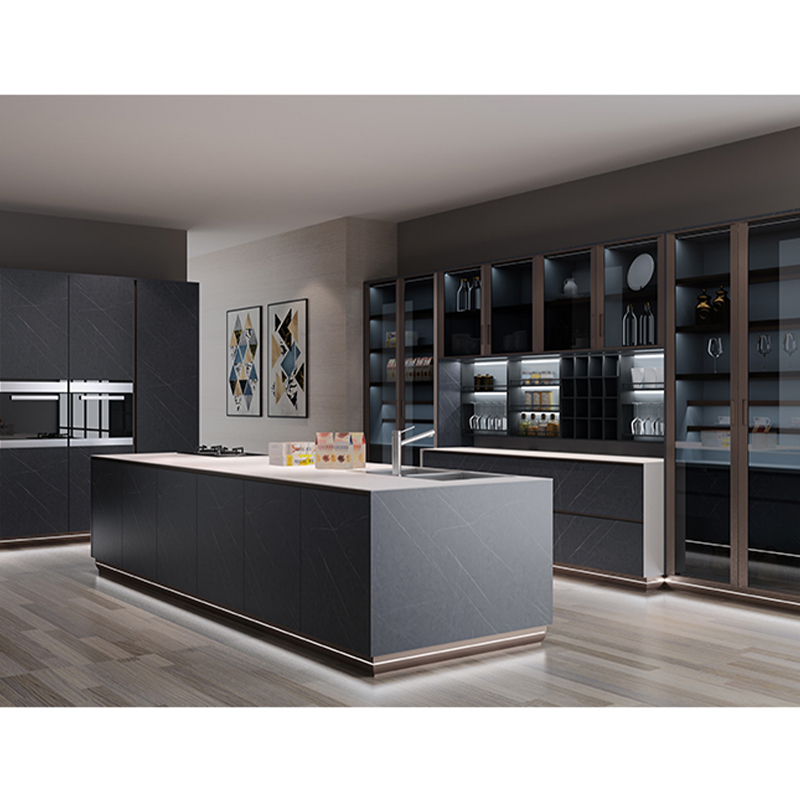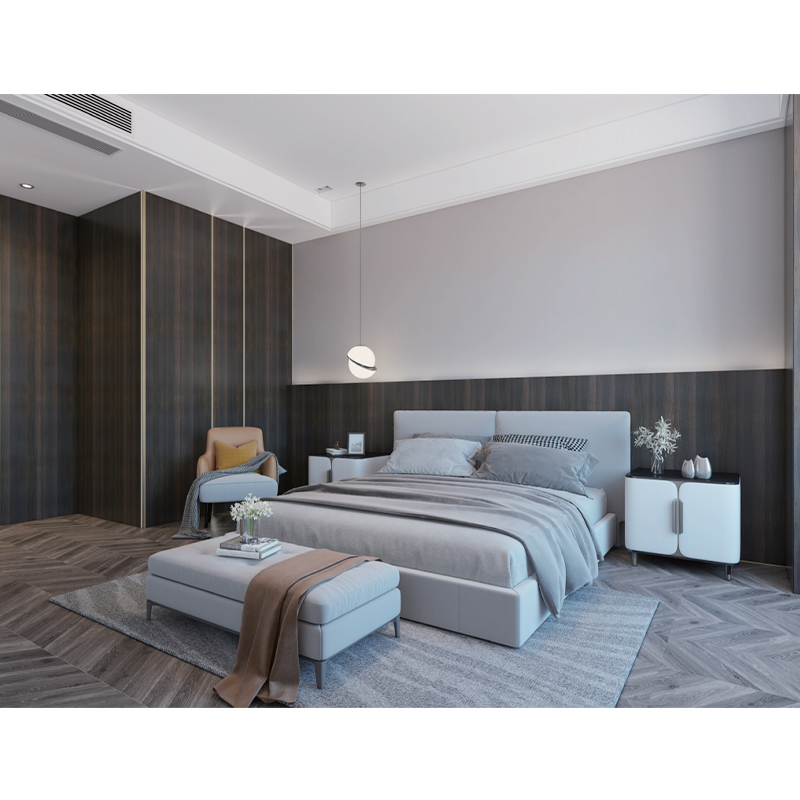How effective is the anti-oxidation process for the aluminum frame of an aluminum-framed glass wood wardrobe cabinet?
Release Time : 2025-11-13
As the core structural component of an aluminum frame glass wood wardrobe cabinet, the anti-oxidation process of the aluminum frame directly determines the wardrobe's lifespan and aesthetic stability. Aluminum readily reacts with oxygen in the natural environment, forming a loose aluminum oxide layer. While this primary oxide film provides basic protection, its corrosion resistance is limited, especially in humid or salt spray environments where pitting and powdering are common. Therefore, enhancing the anti-oxidation performance of the aluminum frame through specialized processes is crucial for ensuring the long-term value of the wardrobe.
Anodizing is the mainstream technology for anti-oxidation treatment of aluminum frames. This process generates a uniform and dense aluminum oxide film on the aluminum surface through electrochemical action. During treatment, the aluminum frame is immersed in an acidic electrolyte and a direct current is applied, causing the aluminum to act as the anode and undergo an oxidation reaction. The resulting oxide film thickness is typically between 5 and 25 micrometers, but can reach over 60 micrometers under special requirements. This film not only effectively blocks oxygen and moisture from contacting the aluminum substrate but can also be further enhanced in corrosion resistance through sealing treatments (such as boiling water sealing or nickel salt sealing). Anodizing enhances the surface hardness and wear resistance of aluminum frames, and allows for a variety of colors through dyeing processes to meet the needs of different interior design styles.
Chemical oxidation is another commonly used surface treatment method for aluminum frames. Unlike anodizing, chemical oxidation relies on the chemical reaction between chemical reagents (such as chromic acid and phosphoric acid) and the aluminum material to form a protective oxide film on the surface. This process is simple to operate and convenient, suitable for small-batch or on-site processing, but the film thickness is relatively thin, and its corrosion resistance is slightly inferior to that of anodized films. To improve performance, chemical oxidation is often followed by passivation treatment. This involves immersing the aluminum frame in a solution containing a passivating agent to form a thin and dense passivation film on the surface, further slowing down the corrosion process. However, due to environmental pollution concerns, the hexavalent chromium reagent used in traditional chemical oxidation processes has been gradually replaced by trivalent chromium or chromium-free passivating agents.
Electrophoretic coating and organic coating offer more flexible protection options for aluminum frames. Electrophoretic coating uses an electric field to uniformly deposit charged organic coating particles onto the aluminum frame surface, forming a continuous and smooth coating. This coating process offers controllable thickness, excellent corrosion resistance, and the ability to achieve complex colors and textures, making it widely used in high-end aluminum products in the automotive and construction industries. Organic coatings, including spraying and dipping, form a physical barrier by applying organic coatings such as epoxy resin and polyurethane to the aluminum frame surface. These coatings offer flexible application and lower cost, but attention must be paid to the adhesion between the coating and the aluminum material, as well as aging issues during long-term use.
In practical applications, the choice of anti-oxidation process for aluminum frames must comprehensively consider the usage environment and cost. For example, coastal areas with high humidity and salinity require higher corrosion resistance for aluminum frames, making a composite process of anodizing combined with electrophoretic coating more suitable. In dry inland areas, chemical oxidation or a single-layer organic coating is sufficient. Furthermore, the aluminum alloy grade (e.g., 6063, 6061) of the aluminum frame glass wood wardrobe cabinet also influences the process selection. Differences in alloy composition can lead to variations in oxide film growth rate and film performance, requiring adjustments to process parameters to ensure optimal treatment results.
The anti-oxidation process for the aluminum frame must also be coordinated with the overall design of the wardrobe. For example, minimalist aluminum frame glass wood wardrobe cabinets often use a ceramic coating process, which gives the aluminum frame a matte, delicate texture while improving stain resistance and wear resistance. Vintage-style wardrobes, on the other hand, may opt for brushed anodizing, where mechanical brushing creates a fine texture on the aluminum frame surface, enhancing visual depth. Regardless of the process, the core goal is to extend the lifespan of the aluminum frame, ensuring the wardrobe maintains its aesthetic appeal and functional stability over long-term use.







